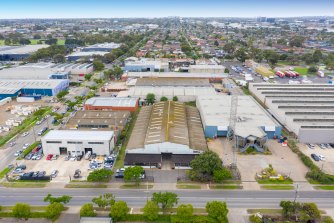“Overall, industrial properties are unlikely to perform as strongly over the medium term as they have done in recent years.”
Recent stellar growth in the industrial sector is the result of surging retail inventories, COVID demand, and businesses using space to shore up supply chains in the face of transport chaos.

The Australian industrial property sector remains robust but headwinds are building.
Average capital values of prime Sydney and Melbourne industrial properties rose 26 per cent and 32 per cent over the last two years as a flood of investor money poured into the sector, Oxford said.
And average prime yields also tightened dramatically to 3.6 per cent and 3.9 per cent respectively in Sydney’s outer west and Melbourne’s south east, the group said.
But with bond rates blowing out – Oxford expects long-term rates to stay above 3 per cent for the next two years – there is clearly a shift in sentiment that may be “already unsettling some investors,” Walker said.
“For real estate investors,” says Quay Global, “the question is whether Amazon is the only user with excess warehouse needs, or is Amazon the only retailer that is honest about the current environment?”
“Overall, industrial properties are unlikely to perform as strongly over the medium term as they have done in recent years.”
Oxford Economics’ principal property economist Lee Walker
“There is no doubt there remains a compelling secular long-term demand story for industrial property that extends beyond ecommerce. But despite the secular demand, low barriers to entry mean industrial property is still a cyclical asset class. And more than any other investment, for cyclicals, price matters,” the fund manager maintains.
Investment bank JPMorgan says Amazon will grow into its excess space within a year.
“We don’t see it as a major issue for the existing occupier market, but it may reduce development demand,” analysts, Richard Jones, Annabelle Atkins and Solomon Zhang, told clients in a note.
Macquarie Bank said briefings with its industrial contacts show development margins are holding up, underpinned by strong rental growth. Vacancy in Australian markets is around 1 per cent, in the US around 3.5 per cent and below that figure in the UK and Europe.
Loading
“Strong direct market fundamentals are underpinning elevated cashflow growth and asset valuations, despite bond yield increases,” it said in a note to clients.
The key risks to the sector are a slowing economy and reduced demand for goods and leases. “However, at present conditions remain buoyant,” it said.
Stay connected with us on social media platform for instant update click here to join our Twitter, & Facebook
We are now on Telegram. Click here to join our channel (@TechiUpdate) and stay updated with the latest Technology headlines.
For all the latest Business News Click Here
For the latest news and updates, follow us on Google News.
